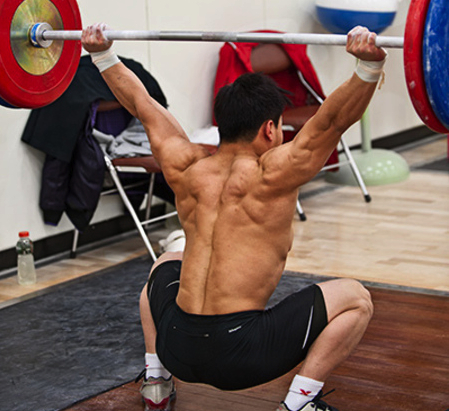Yes, Mobility Is That Important
By: Bobby DeThomasis
Everyone knows that stretching is important (at least for most people, but not necessarily for all), however I still think that not nearly enough emphasis is put on it and when mobility exercises are performed they are often done incorrectly. In all honesty I am probably one of the worst culprits of mismanaging and under emphasizing my mobility training. For a long time I was under the mindset that since I only have about 75 minutes per day (if that) to take care of my body I would rather go through a quick dynamic warm up, some quick self stretches and get straight into my workout. Admittedly it actually took me a long time to even get to the point where I would devote even 15 minutes per day to my dynamic warm up. For a long time my warm up would consist of doing one set of an exercise with 50% of my RM on the bar and I would start to train. I would find though that it always seemed like I was spinning my wheels with my training. I would train hard for a couple months and all the sudden my recurring back issue would flair up (as it often does as soon as I start to squat or deadlift heavy) and I would have to regress my training to doing unilateral work and rehabilitation. I would start to stretch more and my back would start feeling better at which point I would start squatting again and just perpetuate the same cycle.
This went on for quite some time (more then I would like to admit) and although deep down I knew what I had to do (devote more time toward proper mobility training) I kept falling into the same cycle of back pain from heavy squatting, stretch, feel better, squat heavy, re-injure and start stretching again. As much as it pains me to say it, I am now a full believer in that sometimes you need to take a step back, re-evaluate what you are trying to accomplish and develop a proper course of action. A course of action that may be hard to accept initially because let’s face it, for people who see working out as a huge part of their lives it is difficult to say “I am going to spend less time working out and more time stretching.” Not to mention, anyone who has poor mobility would agree that stretching is basically the worst thing ever. It is uncomfortable, tedious, boring and so slow to improve. I am here to insure you that in this case the juice is definitely worth the squeeze and if you are someone like me who seems to always be spinning their wheels with their training and constantly getting set back with injuries, a proper mobility program may just be the answer.
OK, so now that we agree that mobility is important, what is the best way to design a proper mobility program? First off, you have to find out where you have restrictions. The best way to determine flexibility issues would be to get evaluated by someone who has an in-depth understanding of a movement analysis system that could provide the necessary information. Since the details of how to perform a proper movement analysis are outside the scope of this article I would suggest finding typical symptom patterns associated with your daily life activities. For instance, it is very typical for a hockey player to develop restriction though their hip flexors, hip rotators, quads, pectoralis minors and shoulder internal rotators. A person that sits behind a desk all day coincidently will develop similar restriction patterns in that they typically get very tight through their shoulder internal rotators (subscapularis, and teres major) pectorals minor and subclavius in the upper body. Hip flexor complex (rectus femoris, psoas, iliacus and tensor fascia latae) and hip rotators in the lower body. I have also found that many people (athletes especially) test positive for ankle restriction going into dorsiflexion. This lack of dorsiflexion could have significant implications on a persons ability to squat, deadlift, olympic lift and play many sports while staying healthy. Some experts have estimated that the single best indicator for lower body injury potential is to measure a persons ankle dorsiflexion. If you are a person that is blessed with good ankle dorsiflexion then congratulations, everything is going to be easier for you. For the rest of us poor souls we had better focus a good amount of time on improving ankle dorsiflexion. There are plenty of good videos online that can show stretches for dorsiflexion. I would highly recommend implementing some of those stretches into your daily routine. I should note however that unfortunately for some people improving dorsiflexion is not always as easy as just stretching. If you are the type of person that gets a pinching sensation in the front part of the ankle when you go into dorsiflexion (as opposed to feeling a stretch in the achilles tendon area) then you most likely have an ankle impingement. Ankle impingements are difficult to treat on your own and I would recommend seeing a qualified coach/therapist for proper guidance.
This article is meant to emphasize the importance of proper flexibility and mobility. As I mentioned earlier, everyone is different. One person may have significant restrictions through their quadriceps where as another may be more restricted through the hamstrings. The best way to understand where your restrictions lie is through an in-depth movement analysis by a knowledgable coach/therapist. If you would like more information on how a structured flexibility program could help improve your sports performance and decrease your susceptibility to injury email us at info@performancetrainingsystems.com and you can set up an appointment for an in-depth evaluation.

